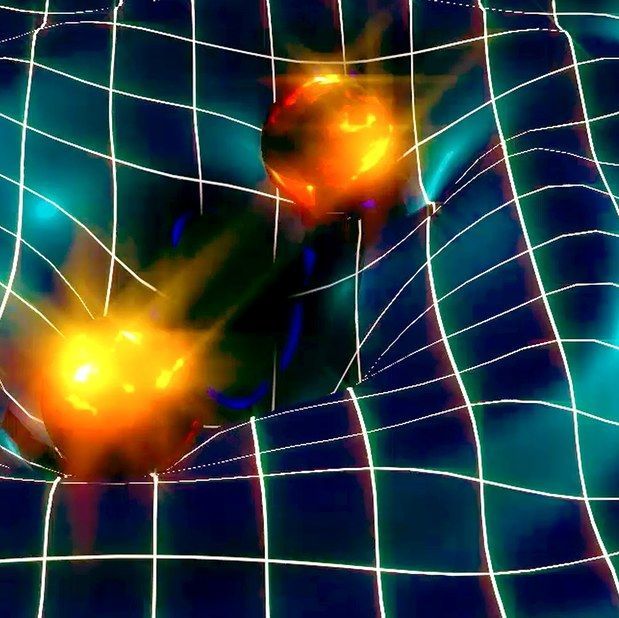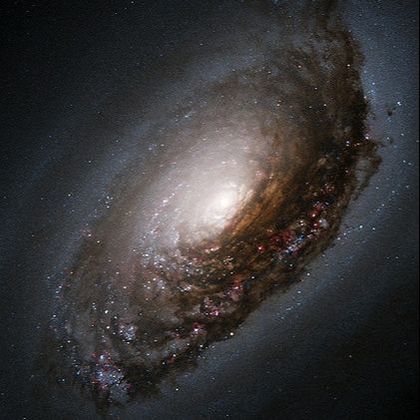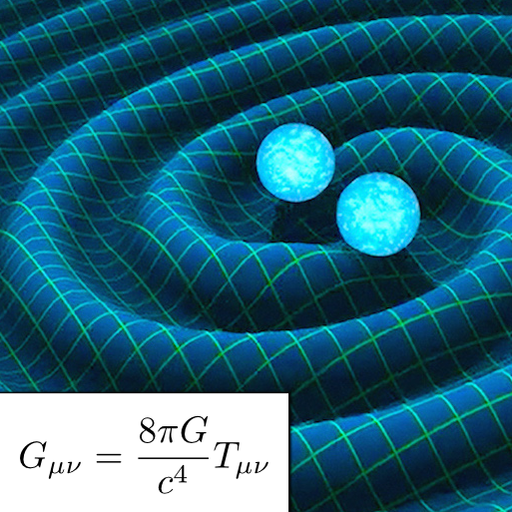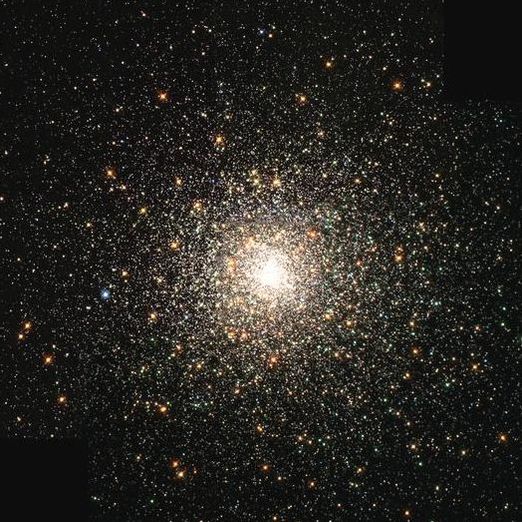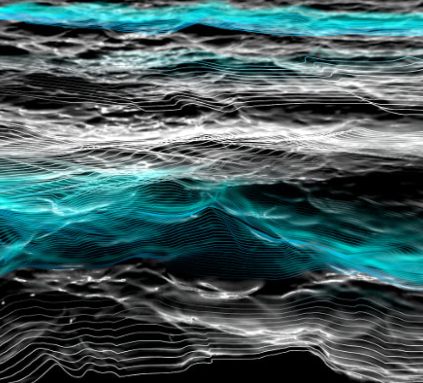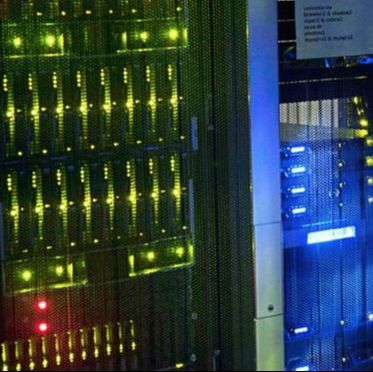Under the direction of Theme leaders A/Prof Eric Thrane and Prof Matthew Bailes, OzGrav's Data/Astrophysics Theme brings together advanced data processing techniques, a global network of telescopes for follow-up observations, and astrophysical modelling to help interpret the data.
The Data/Astro Theme is driven by six major research programs, underpinned by a world-class supercomputing platform:
The Data/Astro Theme is driven by six major research programs, underpinned by a world-class supercomputing platform:
|
major programs
Gravitational Wave Data Analysis Program chairs: Dr Fiona Panther (UWA)
|
The ground-based interferometric detectors LIGO and Virgo have made the first direct detections of gravitational waves from the coalescence of binary black hole and binary neutron star systems. In addition there are a number of as-yet undetected but compelling astrophysical sources in the sensitive band (10-2000 Hz) of these detectors, such as core-collapse supernovae, rapidly rotating neutron stars, gravitational-wave memory and the stochastic background from unresolved binaries. This program includes activities such as performing searches for such sources, including real-time identification of binary sources, and participation in efforts within the LIGO-Virgo Collaboration to characterise and improve detector data quality. The newly constructed OzSTAR computing cluster facilitates expanded efforts in searches for gravitational waves with a focus on methods optimised for GPUs. Detector characterisation is consolidated to leverage our broad expertise in instrumentation, commissioning and Big Data techniques.
|
Pulsar Detections Program chair: A/Prof Ryan Shannon (Swinburne)
|
Pulsars are remarkably occurring natural laboratories for gravitational-wave astrophysics. OzGrav’s mission is to discover gravitational waves, and pulsars offer an opportunity to do this in the nanohertz frequency band. A census of our own galaxy’s pulsar population provides the most accurate estimates of the sources we expect to detect in the audio bands with aLIGO, and rare objects allow us to test the limits of general relativity.
|
Multi-Messenger Observations Program chairs: Dr Katie Auchettl (Uni Melb) and Dr Dougal Dobie (Swinburne)
|
This program performs optical follow-ups of neutron star mergers with the Zadko, GOTO, SkyMapper and other telescopes. The GOTO telescope in La Palma will be fully commissioned to detect optical counterparts of gravitational wave events in the northern hemisphere. This will search for pulsations in X-ray and radio data to benefit continuous gravitational-wave searches. We will provide precision ephemerides for gravitational-wave searches. We are coordinating and optimising all OzGrav-related EM facilities worldwide for GW follow up during future LIGO/Virgo operational runs. This includes expanding the Deeper Wider Faster (DWF) project to include over 60 facilities, making it the largest collaborative telescope program in the world.
|
Relativistic Astrophysics Program chair: Dr Ryo Hirai (Monash)
|
The relativistic astrophysics program is testing the limits of general relativity including a search for gravitational-wave memory, tests of the no-hair theorem, and searches for new physics using ultra-relativistic pulsars. We combine gravitational-wave data with electromagnetic observations to constrain the properties of gamma-ray bursts and binary neutron star remnants. The program also includes simulating gravitational wave signals from detailed models of core collapse supernovae and studying their detectability.
|
Population Modelling Program chair: Dr Simon Stevenson (Swinburne)
|
Populations encode information about complicated astrophysical processes which cannot be obtained from a single source. Such populations include the Galactic relativistic binary pulsar population and the newly emerging double black hole and double neutron star populations from gravitational-wave observations, as well as other rare astrophysical phenomena such as supernovae, isolated Galactic pulsars, millisecond pulsars, x-ray binaries, short and long gamma-ray bursts and luminous red novae.
We simultaneously use highly detailed models of globular cluster evolution to investigate the formation of these populations through stellar dynamics, whilst also studying the evolution of populations of massive stellar binaries in isolation. In parallel, we are developing phenomenological models to extract information from populations whilst relying on fewer astrophysical assumptions. As the number of observed sources in these populations grow, OzGrav will start to be able to place strong constraints on these formation models. They will inform us about: the masses, spins and kicks neutron stars and black holes receive at birth in supernovae; whether these systems preferentially form in the field or in dense stellar environments; and if, when and how massive stars undergo common envelope evolution. |
Inference Program chair: Dr Chayan Chatterjee (UWA)
|
This program will develop and improve Bayesian inference and parameter estimation tools that answer questions posed across the Data/Astrophysics theme. Easy-to-use parameter estimation tools will be developed capable of extracting the best science possible from all the multimessenger observatories. There will be an increase in the number of researchers involved with core LIGO parameter estimation activities including parameter estimation shifts (following detections) and development / maintenance of parameter estimation pipelines. Inter-program communication will help facilitate methods to share the tools between fields and work towards using inference as the common language to discuss astrophysics.
|
supercomputing Infrastructure
OzSTAR supercomputer Leader: Prof Jarrod Hurley
|
In order to achieve our Data/Astro science goals, OzGrav harnesses peta-flop scale supercomputing infrastructure and expertise from Swinburne's OzSTAR facility. The analysis of Advanced LIGO data requires large-scale parallel processing in order to carry out matched filter searches in real time. Pulsar observations use on-site supercomputers to extract the beam-shape of neutron stars that are later searched for sub-microsecond delays, indicative of passing gravitational waves. Finally, new pulsars in relativistic orbits offer the chance to test Einstein’s theories exhaustively but can only be found by searching enormous dimensions of phase space. In short, the computational demands of our science are immense. Efficient supercomputing is not just about the peak performance of a computer, but its design, operation and code optimisation. OzGrav's team of data scientists are at the forefront in designing highly efficient codes for gravitational wave detection in both the audio and nanohertz (nHz) bands.
|

